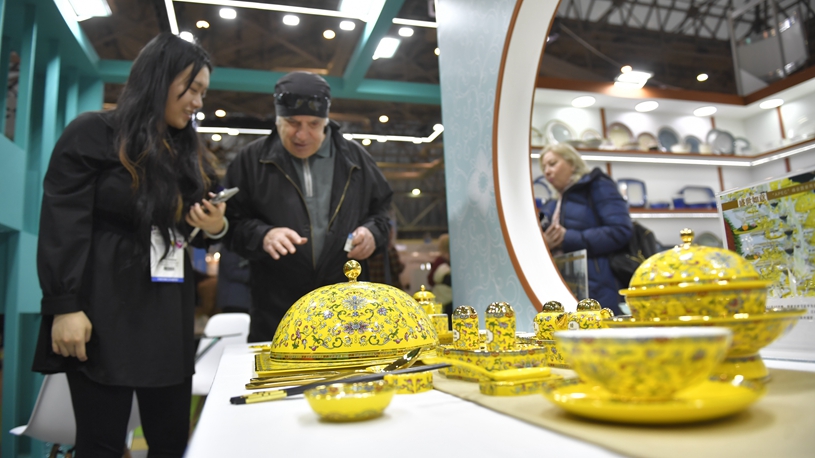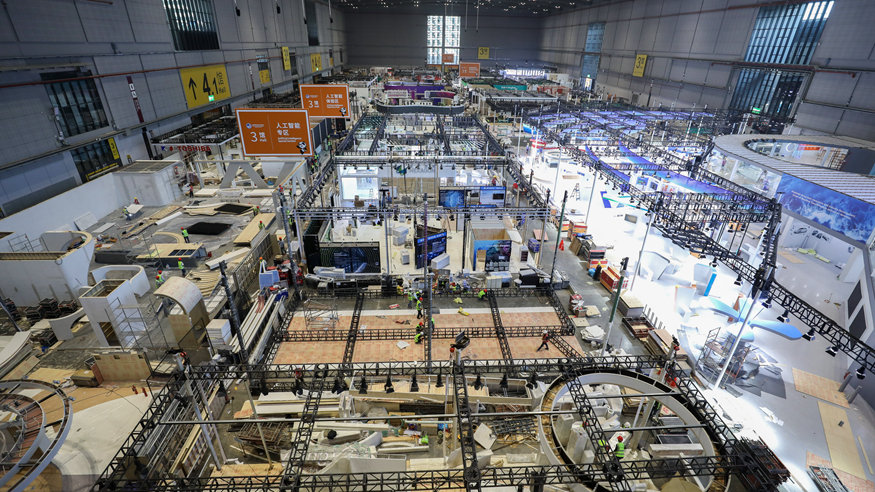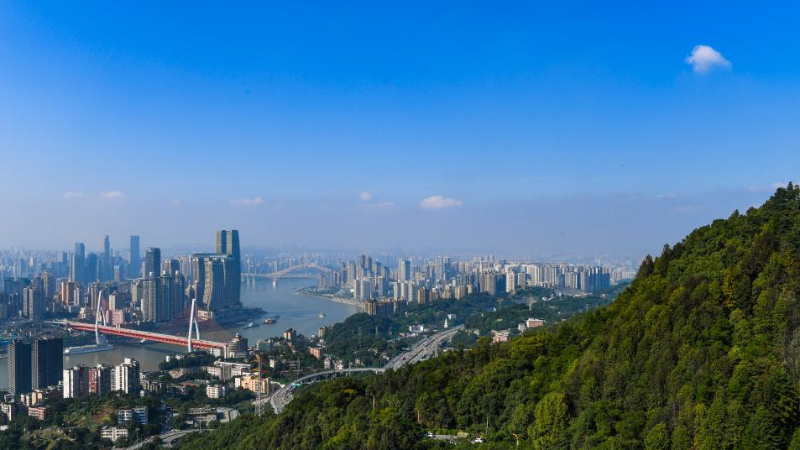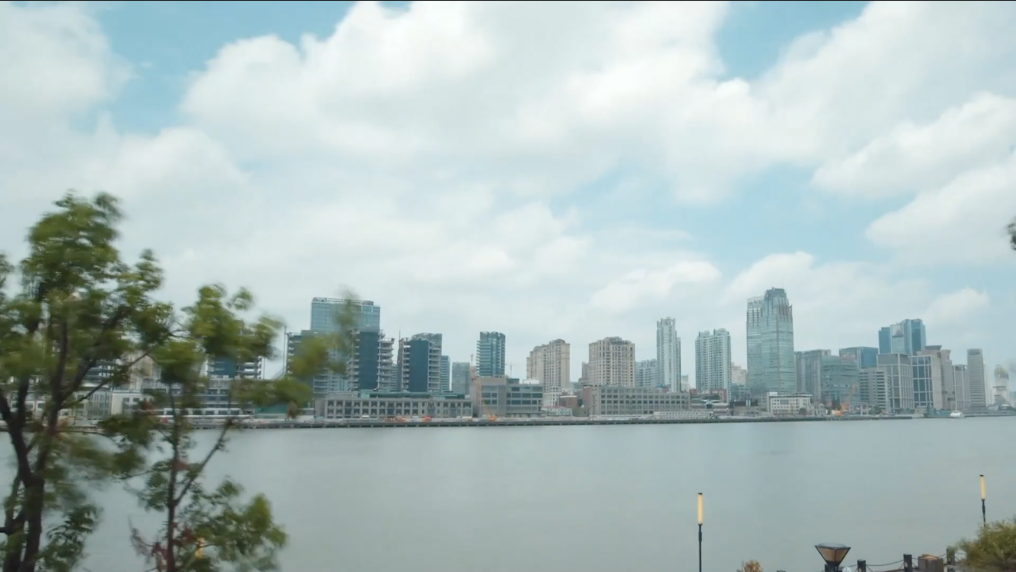* The Shenzhou-16 crew consisting of three Chinese astronauts returned to Earth safely on Tuesday, after completing a five-month space station mission.
* The mission marked that all three kinds of astronauts currently available in China, namely spacecraft pilot, spaceflight engineer and payload expert, had completed their flight assessments and practical tests.
* The crew, which remained in orbit for 154 days, carried out a total of 70 space experiments in areas of aerospace medicine, life ecology, biotechnology, material science, fluid physics, fluid mechanics and aerospace technology, as well as eight engineering studies involving human-factors, obtaining a wealth of experimental data.
JIUQUAN, Oct. 31 (Xinhua) -- The Shenzhou-16 crew consisting of three Chinese astronauts returned to Earth safely on Tuesday, after completing a five-month space station mission.
Shenzhou-16's return capsule, carrying astronauts Jing Haipeng, Zhu Yangzhu and Gui Haichao, touched down at the Dongfeng landing site in north China's Inner Mongolia Autonomous Region at 8:11 a.m. (Beijing Time), and the crew had all left the return capsule by 9:10 a.m., according to the China Manned Space Agency (CMSA).

The return capsule of the Shenzhou-16 manned spaceship touches down at the Dongfeng landing site in north China's Inner Mongolia Autonomous Region, Oct. 31, 2023. (Xinhua/Li Gang)
The Shenzhou-16 astronauts are in good health and the Shenzhou-16 manned mission proved a success, while also marking that all three kinds of astronauts currently available in China, namely spacecraft pilot, spaceflight engineer and payload expert, had completed their flight assessments and practical tests, the CMSA said.
This mission has laid a good foundation for the subsequent development and construction of the crewed spaceflight program and large-scale space science experiments, the CMSA added.
"I am very excited at this moment as we have finally come back home and returned to our motherland," said Jing, the mission commander and the first Chinese astronaut to complete four space missions, which amounted to over 200 days.
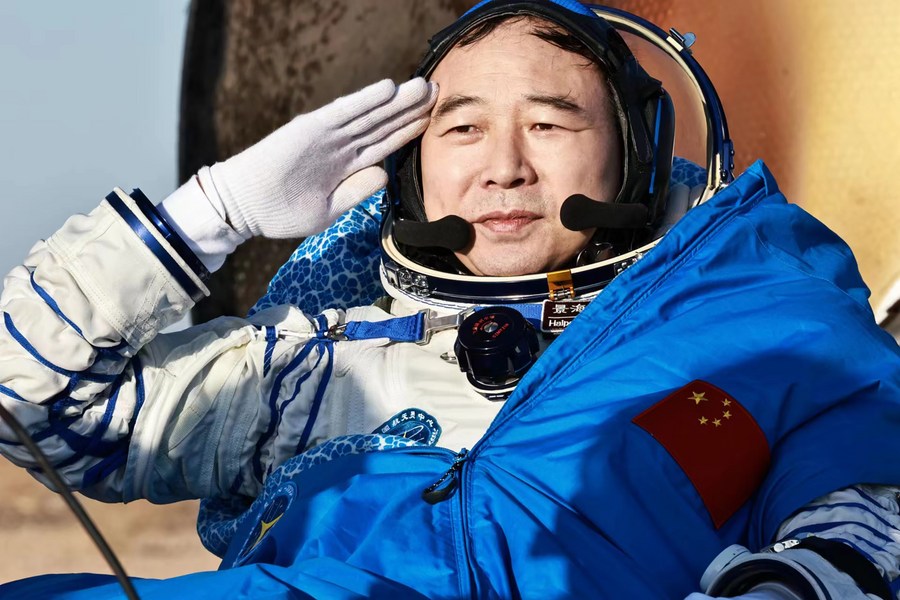
Astronaut Jing Haipeng is out of the return capsule of the Shenzhou-16 manned spaceship at the Dongfeng landing site in north China's Inner Mongolia Autonomous Region, Oct. 31, 2023. (Xinhua/Li Gang)
"During our mission, the crew lived a happy life and worked efficiently. All operations were carried out without any mistakes," said Jing while sitting on a chair in front of the capsule.
Zhu, the country's first spaceflight engineer in space, said they coordinated well in successfully completing various tasks and witnessed the glorious space station Tiangong, the country's national space laboratory, during the five-month mission. "China's space station is always worth looking forward to," Zhu added.

Astronaut Zhu Yangzhu is out of the return capsule of the Shenzhou-16 manned spaceship at the Dongfeng landing site in north China's Inner Mongolia Autonomous Region, Oct. 31, 2023. (Xinhua/Li Zhipeng)
"I will stick to my original aspiration and mission as an astronaut and a teacher with practical actions, and look forward to traveling to the country's space station again to explore more scientific mysteries," said Gui, China's first civilian astronaut and first payload expert in space.
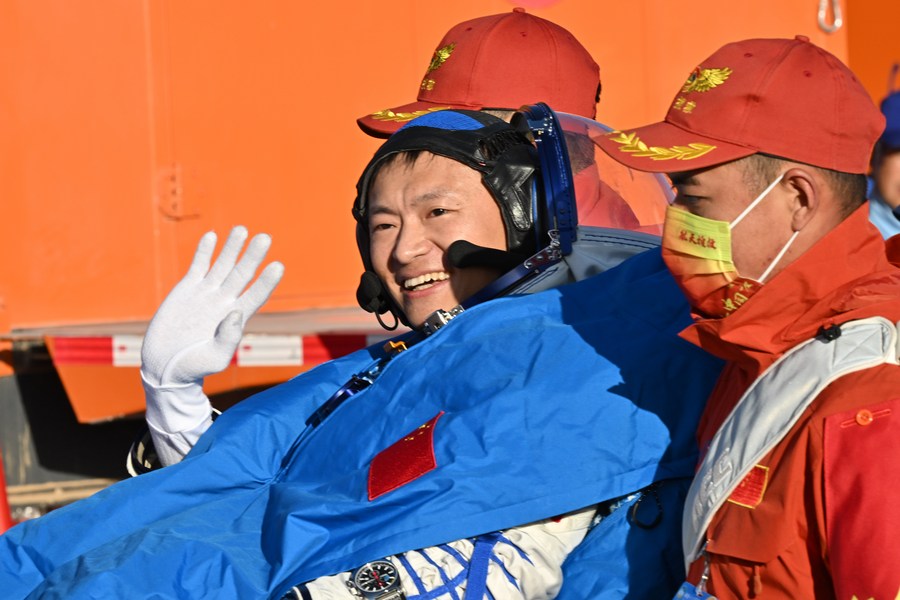
Astronaut Gui Haichao is out of the return capsule of the Shenzhou-16 manned spaceship at the Dongfeng landing site in north China's Inner Mongolia Autonomous Region, Oct. 31, 2023. (Xinhua/Liu Jinhai)
The return capsule separated from Shenzhou-16's orbiting capsule at 7:21 a.m. The brake engine then ignited and the return capsule separated from the propulsion capsule.
The ground search team arrived at the landing site soon after the return capsule landed.
China launched the manned spaceship Shenzhou-16 on May 30, 2023. It was the first crewed mission of the application and development stage of China's space station.
FRUITFUL RESULTS
The crew, which remained in orbit for 154 days, carried out a total of 70 space experiments in areas of aerospace medicine, life ecology, biotechnology, material science, fluid physics, fluid mechanics and aerospace technology, as well as eight engineering studies involving human-factors, obtaining a wealth of experimental data.
They worked with researchers on the ground in fluid physics experiments and cold atom interferometer set-up.
"Some projects have achieved application results and the comprehensive benefits of the space station as a national space lab are gradually emerging," said Lin Xiqiang, deputy director of the CMSA, at a press conference last Wednesday.
During the mission, the Shenzhou-16 crew performed a space walk, delivered a lecture from the space station, and on several occasions assisted with the movement of cargo.
They also completed tasks such as the installation of the space radiation biological exposure experiment equipment and electric propulsion system gas cylinder.

This screen image captured at Beijing Aerospace Control Center on July 20, 2023 shows Shenzhou-16 astronaut Jing Haipeng waving after finishing extravehicular activities. (Xinhua/Guo Zhongzheng)
In the extravehicular activities lasting about eight hours, they completed several tasks with the assistance of the space station's robotic arm, including the installation and lifting of the support frame for a panoramic camera outside the Tianhe core module, and unlocking and lifting of two panoramic cameras outside the Mengtian lab module.
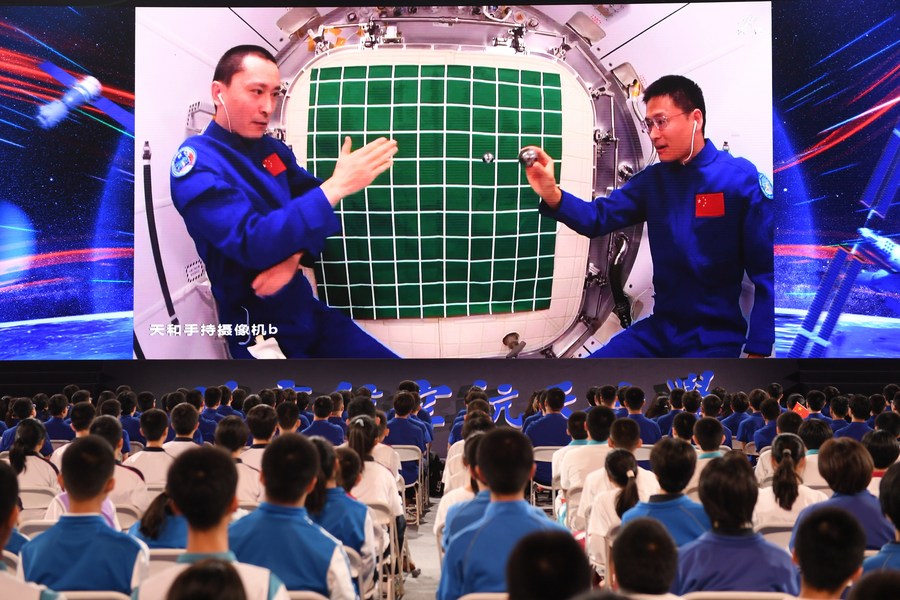
Students attend the fourth live class of the "Tiangong Class" series at Beihang University in Beijing, capital of China, Sept. 21, 2023. (Xinhua/Ju Huanzong)
The trio delivered the first science lecture from the Mengtian lab module.
During the 48-minute lecture, the astronauts introduced scenes from their work and life in the Mengtian, and demonstrated various interesting experiments in the microgravity environment, such as spherical flame and metal gyroscope experiments, and those showing the law of momentum conservation.
In order to improve the work efficiency in the microgravity environment, the crew has taken an inventory of in-orbit goods in the station and tidied them up, working in collaboration with ground workers. The stocktaking job involved about 850 goods transfers and the exchange of 135 tidy-up messages, according to Lin.
After Shenzhou-16's separation from the space station combination on Monday night, the crew captured a high-definition panoramic image of the space station combination with Earth visible in the background.
"This is the first photo capturing the entire configuration of the space station," Lin said.
The spaceship also brought back some experimental samples to Earth, Lin added.
(Video reporter: Ye Ziyan; video editors: Yang Zhixiang, Hui Peipei, Liu Ruoshi) ■

